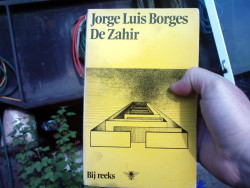Above: Yves Klein, la révolution bleue[1] (2006), a documentary film on Yves Klein by François Lévy-Kuentz.
This is another stumble story, by which I mean, me stumbling upon items in my encyclopedia.
I’ve been investigating the proto-avant-garde, and have identified its canon as Negroes Fighting in a Tunnel at Night (1882) Funeral March for the Obsequies of a Deaf Man (1884) and Mona Lisa Smoking a Pipe (1887).
Two of these works (Negroes and Funeral March) are about nothingness and the void. They are precursors — by decades — to Russian artist’s Kazimir Malevich monochromes and to American musician John Cage’s silent music.
Then I remembered French artist Yves Klein, another artist who worked with the void.
There is his Zone of Immaterial Pictorial Sensibility (1959) in which he sold empty space in exchange for gold (of which he threw away half in the Seine) and his photomontage Leap Into the Void (1960) in which he leaps from a wall seemingly on the pavement, but actually into the ‘void’.
Towards the end of the Yves Klein documentary above there is footage from the ‘living brushes’ paintings in the exploitation film Mondo cane, and the documentary mentions a tragic event:
- “while leaving the screening he had a minor heart attack.”
Why did he have a heart attack? Was it a coincidence?
Maybe. Probably.
But some (among whom Derek Jarman) have speculated that the heart attack was due to his “misrepresentation” in Mondo cane. Well, misrepresentation, one could almost say ridiculing; his Monotone Symphony, for example, was exchanged for a cheesy “More, More, More“-type soundtrack song from Mondo cane (while the orchestra was still seen playing) and the voice-over was anything but respectful for Klein’s exploits.
The documentary then draws attention to “Klein’s obsession with fame,” which “finally betrayed him.”
Obsession with fame …
I am reminded of Boris Vian, who also suffered a heart attack while screening the premiere of an adaptation of one of his novels. See the death of Boris Vian.
One last digression.
Watching this documentary, I heard Klein reciting perennial favorite Gaston Bachelard:
- “D’abord, il n’y a rien, ensuite un rien profond, puis une profondeur bleue.”
- “First, there is nothing, then there is deep nothing, then a blue depth.”
It’s from Air and Dreams, which I’ve yet to read.









.jpg)